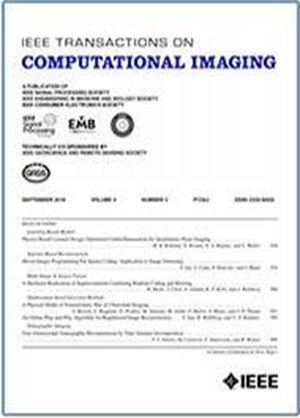求解二维逆散射问题的多频神经Born迭代法
IF 4.8
2区 计算机科学
Q2 ENGINEERING, ELECTRICAL & ELECTRONIC
引用次数: 0
摘要
在这项工作中,我们提出一种基于深度学习的成像方法来解决多频电磁(EM)逆散射问题(ISP)。我们将深度学习技术与EM计算相结合,在单频NeuralBIM原理的指导下,成功开发了一种多频神经Born迭代方法(NeuralBIM)。该方法将多任务学习技术与NeuralBIM的高效迭代反演过程相结合,构建了鲁棒的多频Born迭代反演模型。在训练过程中,采用均方差不确定性指导下的多任务学习方法,自适应分配各频率数据的权值。此外,受ISP物理约束的无监督学习方法用于训练多频NeuralBIM模型,从而消除了对对比度和总现场数据的需求。通过合成和实验数据验证了多频NeuralBIM的有效性,证明了解决ISP的准确性和计算效率的提高。该方法具有良好的泛化能力和抗噪声能力。本文章由计算机程序翻译,如有差异,请以英文原文为准。
Multi-Frequency Neural Born Iterative Method for Solving 2-D Inverse Scattering Problems
In this work, we propose a deep learning-based imaging method for addressing the multi-frequency electromagnetic (EM) inverse scattering problem (ISP). By combining deep learning technology with EM computation, we have successfully developed a multi-frequency neural Born iterative method (NeuralBIM), guided by the principles of the single-frequency NeuralBIM. This method integrates multitask learning techniques with NeuralBIM’s efficient iterative inversion process to construct a robust multi-frequency Born iterative inversion model. During training, the model employs a multitask learning approach guided by homoscedastic uncertainty to adaptively allocate the weights of each frequency’s data. Additionally, an unsupervised learning method, constrained by the physics of the ISP, is used to train the multi-frequency NeuralBIM model, eliminating the need for contrast and total field data. The effectiveness of the multi-frequency NeuralBIM is validated through synthetic and experimental data, demonstrating improvements in accuracy and computational efficiency for solving the ISP. Moreover, this method exhibits good generalization capabilities and noise resistance.
求助全文
通过发布文献求助,成功后即可免费获取论文全文。
去求助
来源期刊

IEEE Transactions on Computational Imaging
Mathematics-Computational Mathematics
CiteScore
8.20
自引率
7.40%
发文量
59
期刊介绍:
The IEEE Transactions on Computational Imaging will publish articles where computation plays an integral role in the image formation process. Papers will cover all areas of computational imaging ranging from fundamental theoretical methods to the latest innovative computational imaging system designs. Topics of interest will include advanced algorithms and mathematical techniques, model-based data inversion, methods for image and signal recovery from sparse and incomplete data, techniques for non-traditional sensing of image data, methods for dynamic information acquisition and extraction from imaging sensors, software and hardware for efficient computation in imaging systems, and highly novel imaging system design.
 求助内容:
求助内容: 应助结果提醒方式:
应助结果提醒方式:


